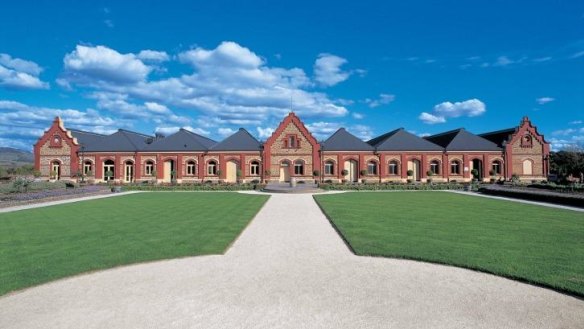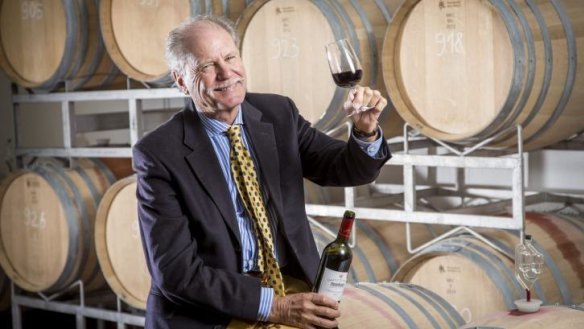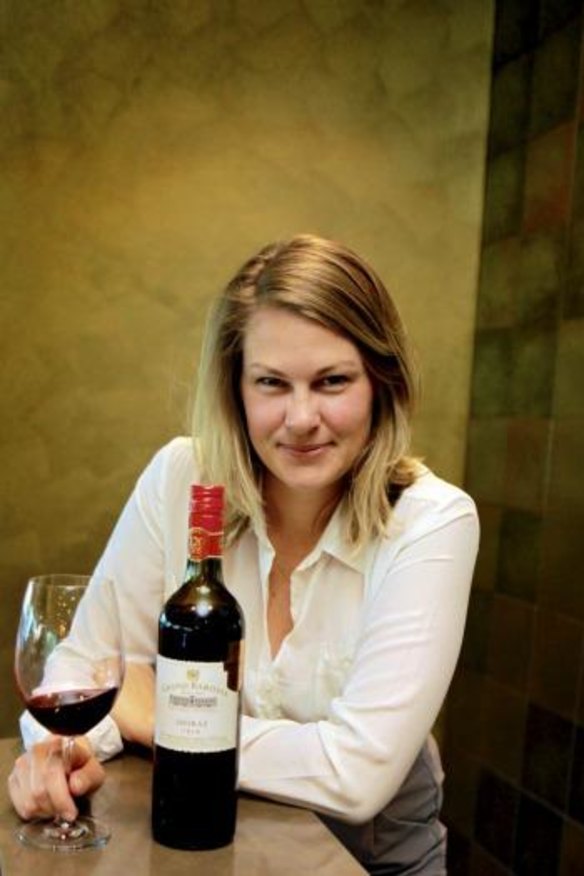South Australia's Chateau Tanunda regains its former glory

The rebirth of Chateau Tanunda is one of the most remarkable stories of the Australian wine industry. This massive, iconic stone and brick building was South Australia's second-largest building when it was built in 1890, second to Elder Smith's Port Adelaide wool store, and was part-funded by 200 Barossa Valley grapegrower shareholders. It's hard to believe, but by 1998 it was unoccupied, unloved, unkempt, inhabited only by pigeons, and under threat of demolition.
A South African named John Geber who'd worked in the tea trade (for Tetley), ventured into wine by buying Cowra Estate in New South Wales and happened to be riding a bicycle in the Barossa when he caught a glimpse of Chateau Tanunda for the first time, through the trees.
"What the hell is that?" he asked, never having heard of the place. After hearing of its plight, and stunned by what he'd seen of it, he was hooked. He bought it without even stepping inside, and without knowing where the money was going to come from.

At least that is Geber's version. He's a big-talking, but also big-thinking, kind of guy. He's obviously not short of a dollar (or a few million) but the way he talks, he's a battler. No matter: he has not only saved a hugely important part of Australian wine industry history from the sword, he's revitalised it in spectacular fashion. He has not only preserved but enhanced what is today a magnificent showpiece for the Barossa Valley. And this year, Chateau Tanunda celebrates its 125th anniversary.
It's amazing to think what the Barossa must have been like in 1890, and what an extraordinary project it was to build Chateau Tanunda. Australia was nearly broke. The Barossa was a small, folksy, rough-as-guts settlement a couple of days' horse ride from Adelaide, which itself was an outpost. The Barossa had been settled only 40 years earlier and its wine industry could best be described as cottage. The settlers were an unlikely mix of German-speaking Silesian religious refugees and well-heeled Englishmen with pioneering spirit.
The chateau is impressive enough today: imagine what an impact it must have made in 1890 – the horse-and-cart days, before the railway came, and motor cars were still a novelty. Impressive enough that John Geber, when challenged over his use of the French word chateau, took his case to The Hague where he fought the European Union, and won.

The stone was quarried from nearby Bethany – the first settled village in the Barossa – where the excavated gulch is home today to the Schrapel family's Bethany winery. The bricks were made in specially built kilns, from clay dug on the property. The chateau was making about 200,000 gallons of wine by 1892.
Later, brandy became the main activity, and Chateau Tanunda brandy was drunk by the King of England. The chateau was bought by the Seppelt family inWorld War I, and they planted their trademark date palms along its roads.
Enough of the history - although it could fill a large book, and indeed a book is soon to be published by Adelaide historian Geoffrey Bishop, assisted by local identity Don Ross.
Cut to the present day. The chateau has been re-roofed, renovated, cleaned up and painted. It's been landscaped like the grand palace that it is, with expansive lawns and gardens, gravel paths, Mintaro slate paving at the entrances, rows of olive trees in halved wine barrels, a cricket oval where international masters play regular matches, a croquet pitch, a restaurant, terraces, spacious cellar door sales; you name it and they have it.
And we haven't even mentioned the wines.
The wines are outstanding.
The Geber family, John and his Swiss-born wife Evelyne, assisted by daughter Michelle, have owned Chateau Tanunda for a mere 16 years, and yet they have managed to build new brands, acquire substantial vineyards, and contract grape supply from a number of very old, high quality vineyards, as well as make superb wines. These range from the inexpensive (and great value) Matthews Road individual vineyard Eden Valley shiraz and cabernet, produced for Dan Murphy's who sell them for a ridiculous $15, through the $20 Grand Barossa range (riesling, shiraz and cabernet) to The Chateau 100 Year Old Vines range, which covers a wonderfully individual $50 semillon and $100 bottlings of shiraz and grenache that are truly, decadently lovely. There are many other wines between; various blends of red and white varieties, such as The Three Graces white (marsanne, viognier, roussanne) and red Chorus (tempranillo, garnacha, graciano), all very good and none expensive.
At the top, fittingly, is The Everest label, under which appear small quantities of the very best wine the team can produce: shiraz and bush vine grenache. These are mesmerising old-vine reds that are not released for several years (the 2008 shiraz is current, at $195). It was the 2005 The Everest Shiraz that won the trophy for the best shiraz/syrah in the world at the International Wine & Spirit Competition in 2010. The 2008 The Everest Grenache won the trophy for best single estate red at the same show.
With the very capable winemaker Stuart Bourne running the winery and Matthew McCulloch by his side - nominally general manager but his role is more influential than the title suggests - the team is a strong one. Chateau Tanunda looks well set and its future looks bright.
